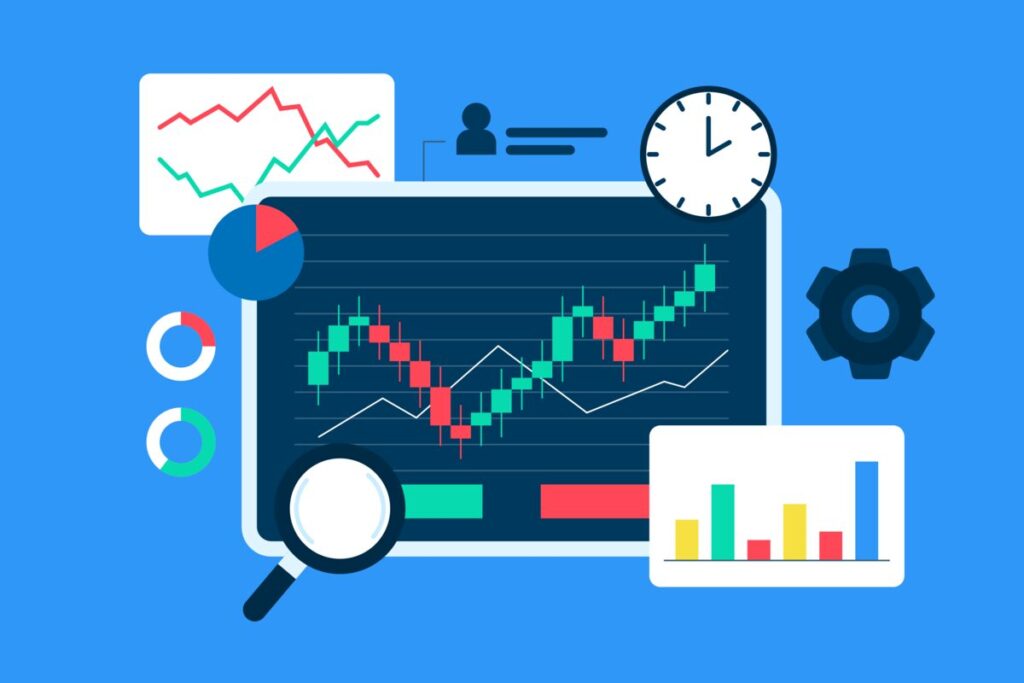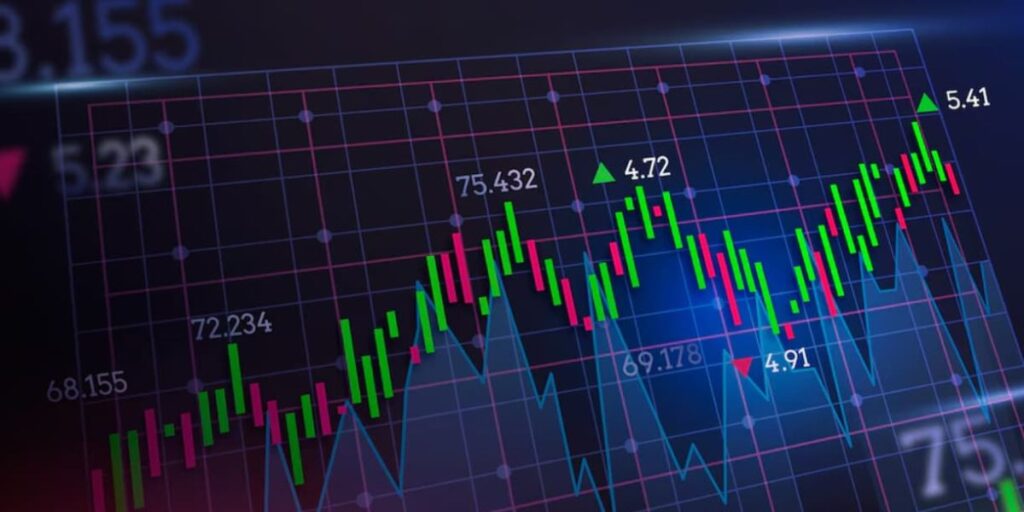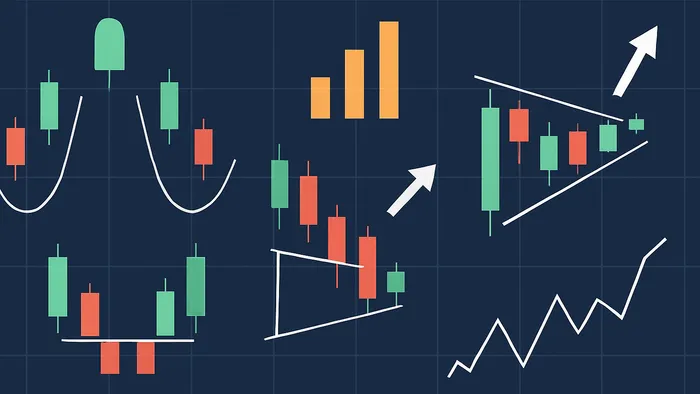If you’re looking to make quick trades within a single day, picking the right tools can make a big difference. Intraday trading means buying and selling stocks or other assets before the market closes, aiming for small but frequent profits. Profitable intraday trading indicators help you spot these chances by showing patterns in price and volume data. In this guide, we’ll cover the best ones based on recent studies and real-world use. We’ll explain how they work, how to apply them, and ways to mix them for better outcomes. This post draws from tested data up to 2025, so you get current insights to build your approach.
Why Use Indicators in Intraday Trading?
Indicators are math-based tools that analyze past price and volume to predict future moves. In intraday trading, they cut through noise, helping you decide when to buy or sell. Without them, you’d rely on guesswork, but profitable intraday trading indicators provide signals backed by data. For example, they spot trends, overbought conditions, or breakouts. Studies show using them boosts win rates, like RSI achieving up to 79% in tests. They’re not foolproof, but they give an edge in fast markets. Choose ones that match your style—trend followers for steady moves or oscillators for ranges.
Picking the right indicators reduces false signals. Combine a few rather than many to avoid confusion. Backtest them on historical data to see performance in different conditions. In volatile sessions, volatility indicators like Bollinger Bands shine by showing price squeezes before big moves. Volume-based ones confirm if a price jump has real support. Overall, indicators make trading more systematic, turning hunches into calculated risks. Practice on paper trades first to build confidence without losing money.
Also, Read About Profitable Intraday Trading Advice 66unblockedgames.com.
Top Profitable Intraday Trading Indicators
Many indicators exist, but some stand out for intraday due to their reliability and ease of use. Based on 2025 studies, RSI and Bollinger Bands top the list with high win rates. We’ll break down the key ones, including how they calculate signals and fit into daily trading. Each has strengths for specific market types, so test them on your assets.
Relative Strength Index (RSI)
RSI measures how fast prices change, scoring from 0 to 100 over 14 periods. It compares average gains to losses—if gains dominate, RSI rises. Above 70 means overbought, suggesting a possible drop; below 30 means oversold, hinting at a rise. In intraday, watch for divergences where price hits new highs but RSI doesn’t, signaling weakness. Adjust periods for shorter frames, like 7 for 1-minute charts. This helps catch reversals in ranging markets. Pros include clear buy/sell levels; cons are false signals in strong trends where it stays extreme. Use it with volume to confirm.
In practice, for a stock like AAPL on a 5-minute chart, if RSI dips below 30 after a sell-off, buy when it crosses back up. Set stops below recent lows. Studies show RSI’s 79% win rate in long-only strategies, making it reliable for quick trades. Avoid solo use—pair with trends to filter. For forex, it works well during London sessions with high liquidity. Track your trades to tweak thresholds, as some markets overbuy at 80 instead of 70.
Moving Averages (SMA and EMA)
Simple Moving Average (SMA) adds closing prices over periods, like 50, and divides by that number for a smooth line. Exponential Moving Average (EMA) weights recent prices more, reacting faster. In intraday, EMAs like 9 and 21 spot trends—when short crosses above long, it’s bullish. Use as support; prices bouncing off signal buys. SMA suits calmer markets, EMA volatile ones. Advantages: easy to read; drawbacks: lags in choppy conditions. Combine for crossovers.
For intraday on indices like Nifty, plot 20-period EMA on 15-minute charts. Buy on pullbacks to the line in uptrends. Backtests show EMA with 1.60 return rate. In stocks, use ribbons of multiple EMAs for strength—tight bands mean low volatility. Exit when price breaks below in longs. This setup helps scalpers grab 0.5-1% gains per trade. Test periods; shorter for crypto’s wild swings.
Moving Average Convergence Divergence (MACD)
MACD subtracts 26-period EMA from 12-period, plotting the difference as a line. A 9-period signal line crosses it for signals—above is buy, below sell. Histogram shows momentum gaps. In intraday, zero-line crosses confirm trends. Divergences warn of fades. Strong in trending markets, weak in ranges with whipsaws. Pros: combines trend and momentum; cons: delayed entries.
Apply on 5-minute forex charts; buy MACD cross above signal with rising histogram. Set targets at resistance. 2025 data ranks it high for reversals. In stocks, use during earnings for momentum bursts. Adjust settings for assets—faster for options. Track false crosses by adding filters like above EMA. This boosts accuracy, aiming for 60% wins with 1:2 risk-reward.
Bollinger Bands
These plot a 20-period SMA middle band with upper/lower at two standard deviations. Bands widen in volatility, narrow in calm. Touching upper suggests sell, lower buy. Squeezes predict breakouts. In intraday, watch for walks along bands in trends. Reliable with 78% win rate. Advantages: visual volatility; disadvantages: false breaks in ranges.
On commodity charts, buy lower band touches with RSI confirm. Exit at middle or opposite. For crypto, use on 1-hour for context, 5-minute for entries. Combine with volume for real breakouts. Studies confirm high reliability in out-of-sample tests. Avoid in news events causing spikes. This tool helps lock profits by trailing stops to middle band.
Stochastic Oscillator
This compares closing price to high-low range over 14 periods, with %K and %D lines. Above 80 overbought, below 20 oversold. Crossovers signal trades. In intraday, full stochastics smooth signals. Good for ranges, spots divergences. Pros: quick responses; cons: many false in trends.
Use on 15-minute stock charts; buy %K cross above %D from oversold. Target previous highs. Similar to RSI but range-focused. 2025 lists it among top momentum tools. In forex, slow settings reduce noise. Pair with ADX for trend strength—if low, trust oversold buys.
Volume Weighted Average Price (VWAP)
VWAP averages price by volume, resetting daily. Prices above mean bullish, below bearish. Acts as support/resistance. In intraday, crossovers signal entries. Useful for institutions, confirms trends. Pros: volume-weighted accuracy; cons: ignores after-hours.
On futures, buy pulls to VWAP in uptrends. Exit at deviations. Top for fair value in 2025 strategies. Watch first-hour builds for direction. Combine with EMAs for stronger signals.
Other Notable Indicators
Parabolic SAR places dots for trends—below price up, above down. Flips signal reversals, sets stops. Good in trends, choppy in ranges. Pivot Points calculate supports/resistances from prior day. Above pivot bullish. On-Balance Volume (OBV) adds/subtracts volume on up/down days; divergences warn. ADX measures trend strength—above 25 strong. These fill gaps in main setups.
How to Combine Indicators for Better Results
Mixing profitable intraday trading indicators avoids single-tool pitfalls. Start with trend like EMA, add momentum like RSI, volatility like Bollinger, and volume like VWAP. For example, buy when price above EMA, RSI below 30, and touches lower Bollinger with VWAP support. This confirms from multiple angles. Limit to 3-4 to prevent overload. Backtest combos on platforms for win rates.
In practice, use MACD for entry timing within EMA trend. If ADX high, trust signals; low, skip. Adjust for assets—more volatility tools for crypto. Track performance; if combo under 55% wins, tweak. This layered approach raises profits by filtering bad trades.
Strategies for Using These Indicators
One strategy: Trend following with EMA and MACD. Buy EMA crossover with MACD confirm, exit on reverse. Another: Mean reversion with RSI and Bollinger. Buy oversold RSI at lower band, sell overbought at upper. Breakout: Trade Bollinger squeeze breaks with volume spike. Scalping: Stochastic crossovers on 1-minute with VWAP filter.
For each, set 1:2 risk-reward—risk $100 to gain $200. Use in high-liquidity hours. Backtest shows these yield steady returns. Adapt to news; avoid trades during big announcements.
Tips to Make Your Intraday Trading More Profitable
Practice on demos before live. Risk small per trade. Keep a journal of why trades worked or failed. Use multiple time frames—higher for trend, lower for entry. Stay disciplined; cut losses fast. Monitor economic calendars to avoid surprises. Update skills with current data, as markets change.
Focus on 2-3 assets you know well. Use alerts for signals. Get enough sleep—fatigue leads to errors. Review weekly performance to improve. With these, profitable intraday trading indicators become powerful allies.
Common Mistakes to Avoid
Overtrading: Don’t force trades; wait for setups. Ignoring volume: Price moves without it often fail. No stops: Always set to protect capital. Chasing losses: Stick to plan, not revenge trade. Too many indicators: Causes paralysis. Learn from these to boost consistency.
Conclusion
Profitable intraday trading indicators like RSI, EMA, MACD, and Bollinger Bands offer solid ways to spot opportunities today. By understanding their workings, combining smartly, and applying in strategies, you can improve your results. Remember, success takes practice and risk control. Start small, learn from data, and trade wisely.


